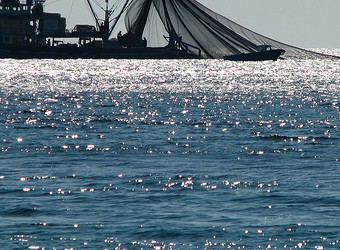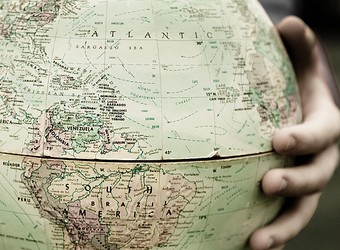An eight-year-old today asks “Will there still be snow when I grow up?” and we know that his question has merit. The world is changing, and it’s not just about snow. The world we’ll be leaving our children will be far more toxic and the natural world far less accessible than any other generation has ever experienced. In addition to extinction of species, there will also be an “extinction of experience.”
When Robert Michael Pyle first introduced the term “extinction of experience,” he was referring primarily to how the loss of species in our immediate surroundings lessens or endangers our experience of nature. His premise was that we can’t experience elements of nature that have disappeared from the realm of the world in which we live. The result, he says, can have disastrous consequences. As personal contact with nature decreases, awareness and appreciation of it retreats. This, as Pyle clearly states, leads to “apathy toward environmental concerns and, inevitably, further degradation of the common habitat.”
Serious damage to our common habitat means a lot more than losing the opportunity to play in the snow or watch butterflies dance around the flowers in our backyards. The accompanying “extinction of experience” includes losses on a much graver scale, including the loss of assurance of a livable environment for future generations.
Our Children’s Trust
One organization with a clear focus on preserving the “common habitat” for current and future generations is Our Children’s Trust. Their mission -- as expressed by its founder and executive director, Julia Olson-- is “to protect the earth’s atmosphere and natural systems by amplifying the voice of the youngest generation through civic engagement and public education.” The idea is to empower young people to hold governments accountable for living up to their responsibility of implementing enforceable science-based Climate Recovery Plans.
Looking to the government as a trustee of important natural resources is not new. This idea has been around for thousands of years in the form of the public trust doctrine. This doctrine calls for governments to ensure public access to and protection of such important natural resources as air and water. But does this apply to climate, as well? Our Children’s Trust thinks so and is using atmospheric trust litigation (ATL) as a legal way to force governments to lower carbon emissions within their jurisdictions.
Atmospheric trust litigation (ATL) -- which includes suing the government for its failure to enact remedies to atmospheric degradation -- was first proposed by University of Oregon law professor, Mary Christina Wood. ATL and the thinking behind it are presented in several notable books by Wood. In Nature’s Trust, Wood argues that governments have a duty to protect the natural systems needed for survival. If the government fails in protecting what is a constitutional right – that is, the right to live and flourish – citizens can then turn to the courts to force the government to do what it is their duty to do.
In Adjudicating Climate Change, Wood argues that present and future generations hold inalienable public property rights to life-sustaining resources. She notes how the courts have enforced public trust protections in other contexts, such as waterways and wildlife. ATL calls on the courts to do the same for the atmosphere. While ATL draws heavily on the public trust doctrine, it is also supported by the concept of intergenerational justice. This concept states that it is unjust – and morally wrong -- for current generations to leave the planet damaged for future generations.
A commitment to the welfare of future generations is sometimes referred to as “seventh generation” thinking. This term is based on a principle articulated in the Constitution of the Iroquois Nation, which says that in every deliberation, we must consider the impact on the seventh generation in the future.
In addition to supporting legal action focusing on climate recovery, Our Children’s Trust also strives to educate the public about the need to consider our children and our children’s children as we make decisions about the environment.
Legal Action
In May 2011, Our Children’s Trust coordinated and supported young people in filing lawsuits or petitions in all 50 states requesting local, state, and federal courts to take action against carbon emissions and other sources of damage to the atmosphere. Some of these cases are still pending in state courts. At the federal level, a Petition for Writ of Certiorari was filed on October 3, 2014 with the U.S. Supreme Court to confirm the federal government’s obligation to protect essential natural resources for future generations. A Writ of Certiorari basically means a review of the decision and proceedings of a lower court. In this case, the lower case ruled that there is no federal constitutional foundation for the public trust doctrine. This ruling, however, is in conflict with decisions of other courts, including the U.S. Supreme Court. The fact that the young people’s claims have been advanced to the U.S. Supreme Court is encouraging. A positive Supreme Court ruling may lead to mandated governmental remedies for climate recovery.
The first legal initiative of Our Children’s Trust at the local level took place in Eugene, Oregon. This initiative –under the banner of “YouCAN” (Youth Climate Action Now) – had students advocating before the Eugene City Council for their right to a stable climate system and clean air and water. As a result, on July 28, 2014, the Eugene City Council adopted a Climate Recovery Ordinance. This ordinance is the first in the nation to incorporate a scientific prescription for a carbon budget and specific fossil-fuel consumption reductions. There is hope that this ordinance will serve as a model for other communities.
Our Children’s Trust has also been active at the state level in Oregon. Several years ago, two Oregon students, Olivia Chernaik, 11, and Kelsey Juliana, 15, filed a lawsuit against the state of Oregon to force the state to take a more aggressive stance against the carbon emissions warming the earth and destroying the environment. This lawsuit is based on the premise that children of today are facing a more drastic and more unstable future than any other generation, and that the government should be held accountable for fixing the problem. As Kelsey Juliana, now 18, explained in a recent interview on PBS with Bill Moyers, children didn’t create the problem, and they’re not in a position to fix it. They’re demanding that the government take responsibility for doing it.
Many children today are aware of environmental degradation and the threat this is creating for a sustainable future. But is it up to kids to save the environment, you may ask. No, but kids can call us to task when it comes to the state of the planet they will inherit. Even very young children seem to understand this. A four-year-old made this clear when he was asked, “Do you think you should help save the Earth?” His response -- “That’s your job. I don’t even know what the Earth is.”
Our Children’s Trust continues to support young people in various legal actions around the country and is now assisting teams of youth and attorneys in a number of other countries. Public education continues through media coverage, a Stories of TRUST film series, and an impressive web-based platform .
Recognizing Children’s Rights
The United States hasn’t always been responsive in recognizing and protecting the rights of children. In fact, the U.S. has failed to endorse the Convention on the Rights of the Child adopted by the United Nations General Assembly in 1989. The U.S. and Somalia are the only two countries refusing to endorse this important international agreement.
Rights of the child outlined in the Convention include the right to live and play in an environment that stimulates their healthy development. The Convention also includes the right of children to be heard. While not specifically referring to the articles of the Convention, the work of Our Children’s Trust is in close alignment with these rights. Article 12 of the Convention, for example, addresses the right of the child to express his or her views freely in all matters affecting the child, and also states that the child “be provided the opportunity to be heard in any judicial and administrative proceedings affecting the child.” This is exactly what’s happening through the work of Our Children’s Trust where children are the plaintiffs in legal proceedings.
Article 3 of the Convention is especially pertinent to this discussion: “In all actions concerning children, whether undertaken by public or private social welfare institutions, courts of law, administrative authorities or legislative bodies, the best interests of the child shall be a primary consideration.” Who can miss the echoes of seventh generation thinking in this statement?
Children do have rights. One of their basic rights is the right to live and flourish in a healthy environment. Children need us, as adults, to see that their rights are protected. That’s why groups like Our Children’s Trust are demanding that children’s right to a healthy environment be recognized.
Generativity
While some research suggests that we, as humans, are more likely to act selfishly without regard for others, other research supports a more generous view of who we are and what motivates our behavior. A theory proposed by the psychologist Erik Erikson suggests we may also be motivated by something called “generativity” – that is, a concern for the next generation and a willingness to act on their behalf. Erikson described generativity as a widening circle of care and concern and suggested that this usually develops during middle adulthood (45-65 years of age). In our earlier years, we tend to define ourselves in relation to people in our immediate circle, such as parents, siblings, teachers, and friends. As we mature, however, our concern expands to a wider circle of people – even to people who are not yet born.
Becoming generative, however, doesn’t always “just happen” as we get older. For some people, different forms of competition or misguided efforts to achieve self-fulfillment may get in the way. These efforts are misguided in the sense that true self-fulfillment can only occur in helping others. As explained by psychologist, Abraham Maslow, one characteristic of self-fulfilled – or self-actualized – individuals is their focus on what is good for other individuals or groups. This view of fulfillment conflicts with what we often consider “making it” in today’s society.
Making it today is often described in terms of personal happiness and an abundance of material comfort. It’s having enough money to own a nice house in a good neighborhood. It’s having money to buy cars, travel, wear expensive clothes, and wine and dine in style. This view of success breeds a “cheating culture” – a culture willing to hurt others to achieve personal gain.
Our society represents a cheating culture in that we’re taking from the commons more than our fair share of natural resources needed for the health and well-being of future generations. But we don’t have to remain this way. We can re-define or even go back to earlier understandings of what it means to be fulfilled. Generativity can play a role in this.
Erikson suggests that generativity versus stagnation is one of the challenges we, as individuals, face as a part of our psycho-social development. Generativity is the positive resolution of this challenge. Stagnation – or the failure to grow -- is the alternative. While Erikson presented his theory of psychosocial development in terms of individual growth, perhaps this same thinking could be applied to our growth as a society. If we, as a society, choose generativity over stagnation, we might have what it takes to create a world committed to ensuring a healthy environment for future generations.
This idea of generativity is based on a “belief in the species” – that is, the conviction that humans can work for a goal that goes beyond their personal interests and that they can care about a future they will not personally participate in or gain from. We already have a public trust doctrine that calls us to protect what future generations need for survival. When elements of our society fail to live up to this principle, we can turn to the courts demanding that they protect the rights of future generations. This is generativity in action, and this is what Our Children’s Trust is all about.






